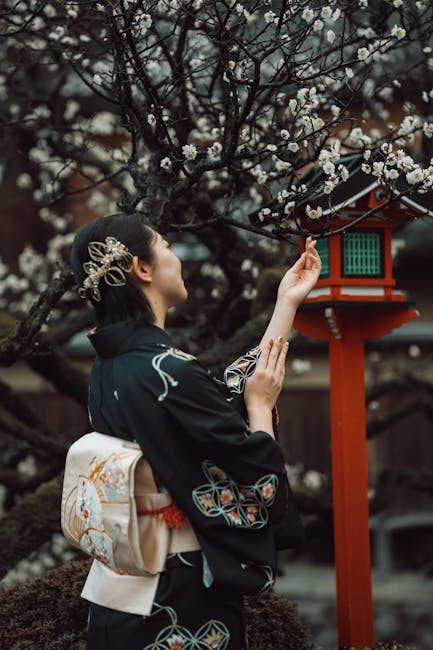Japan is a deservedly popular destination, but travelers often wind up seeing the same sights and miss out on the far-flung, quieter, or less obvious corners of the country. To see a softer side of Japan, we asked locals, from writers to motorcycle enthusiasts, nonprofit workers to photographers, to share something about the places they love best.
Go hiking and learn about Japanese mythology
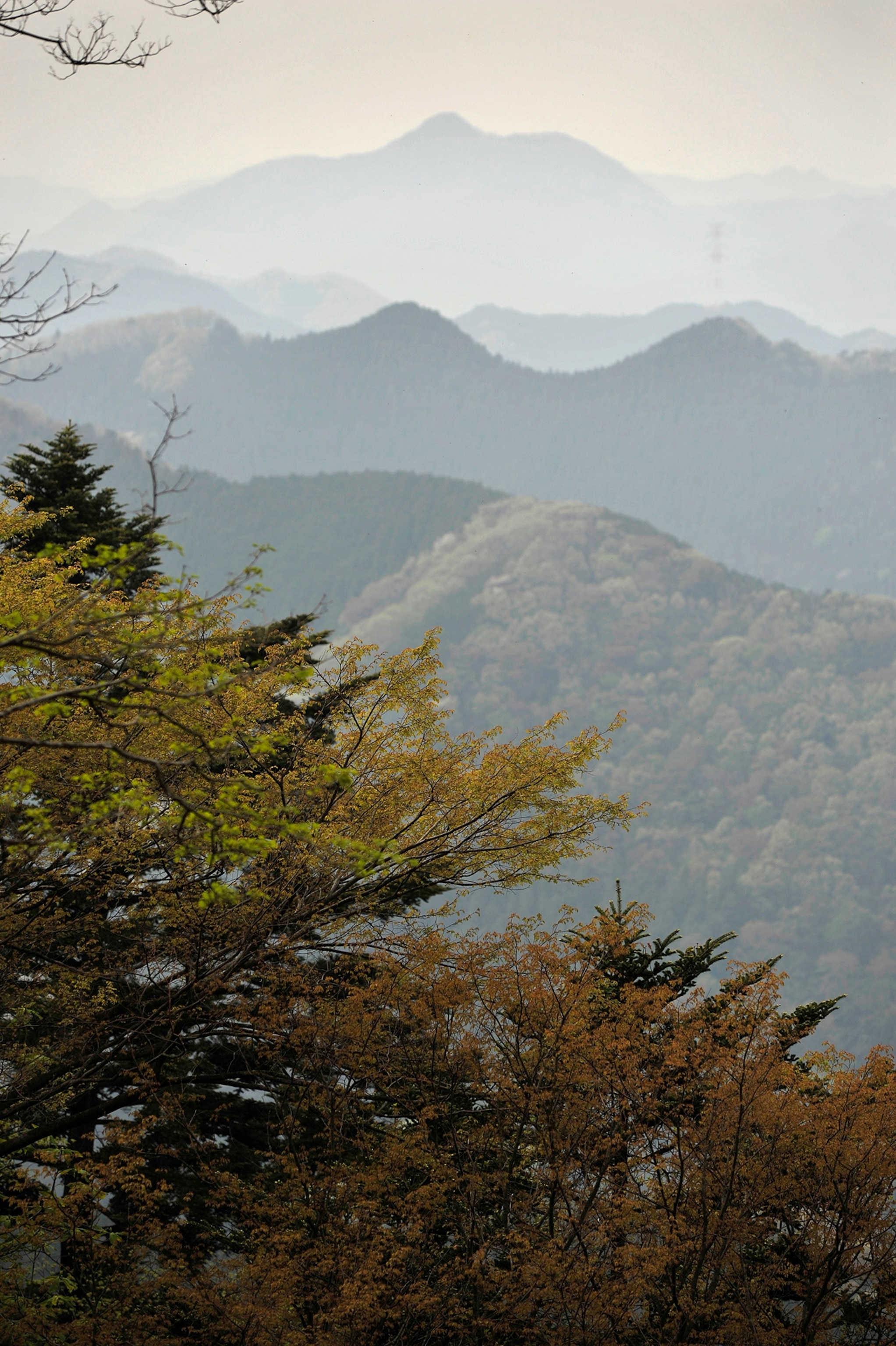
Travelers with only a day to spare should consider visiting Mount Takao—the most prominent mountain in Tokyo. is a logical destination. This is a view of the Tanzawa Mountain Range seen from Mount Takao.
Photograph by Chris Stowers, Panos Pictures/Redux
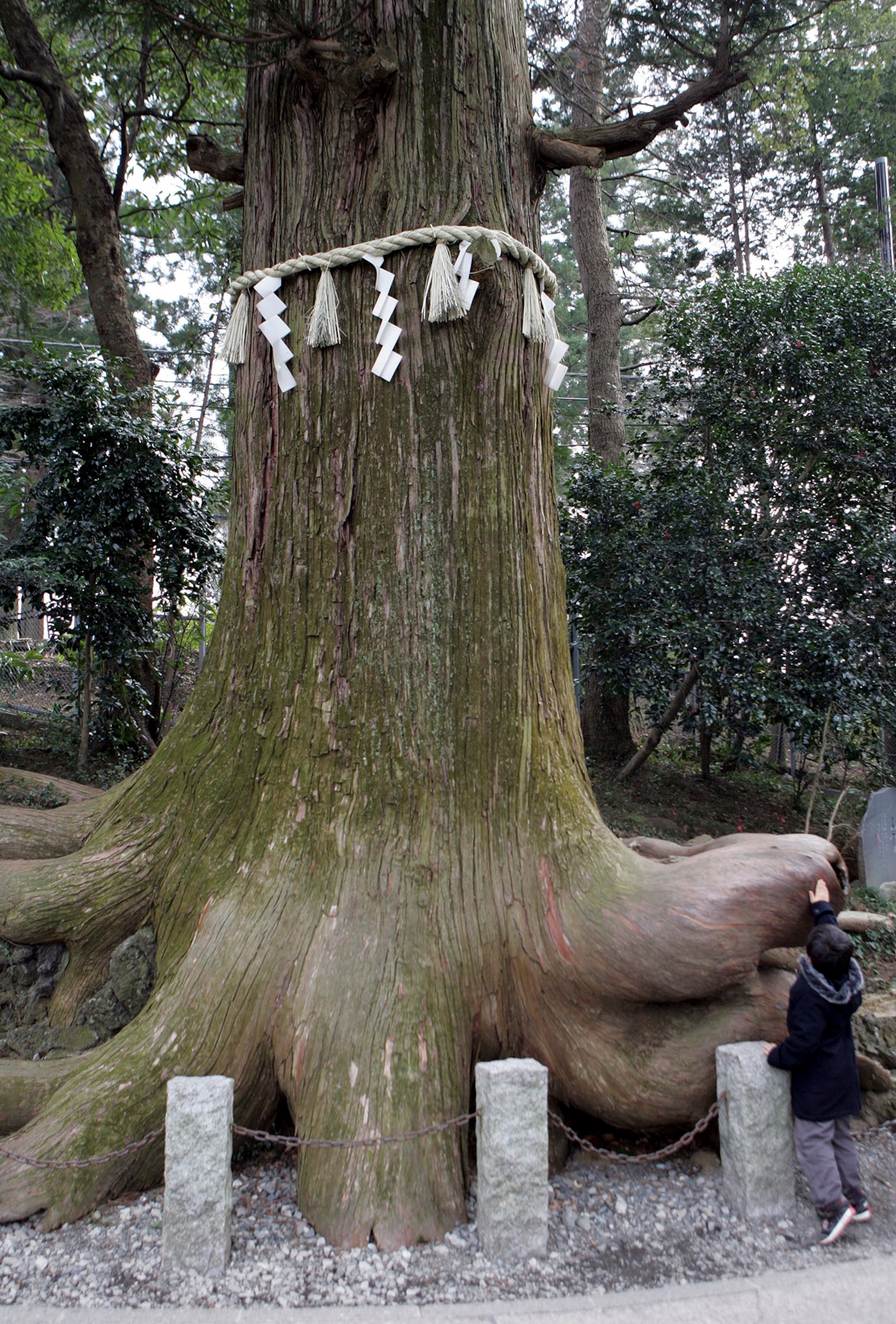
A child touches the ‘tako sugi’, a 450-year-old cedar tree in Takao, Japan. Just a one-hour train ride away, Tokyo is filled with mountains, and streams, evoking similarities to the landscape of Portland, Oreg., and Denver.
Photograph by Franck Robichon, The New York Times/Redux
Hiking at Mount Takao is divine, according to Japan expert and travel writer Mayu Higa. “I love this place. I go there in the spring and autumn–both seasons are really good,” she says. The spring brings cherry blossoms, and the autumn transitions to intensely colored foliage. The mountain is an important place for religious pilgrims. Some hike it every day for a year, each time receiving a goshuin, a calligraphy-embellished stamp with the date and the name of the temple, Yakuoin, in a special book. The mountain is also a spiritual home to the mythical tengu, supernatural creatures that can take the form of long-nosed tricksters and imposing human-bird hybrids; statues and images of tengu proliferate the area.
Go skiing, eat hot pot, and learn about Akita dogs
Come winter, northern Japan is buried deep in snow and ice, and residents have found plenty of ways to stay busy. Rie Miyoshi Grant, multimedia producer at Outdoor Japan magazine, recommends Kita Akita in Akita Prefecture. “This snowy region in Tohoku has a great ski resort called Ani. When the conditions are right, you can ride powder snow and see the juhyou (snow monsters created by ice formed on trees),” says Miyoshi Grant.
“In autumn, hike among fiery fall foliage and warm up with a kiritanpo nabe, a hot pot dish with toasted rice cakes and vegetables.” This area is famous for Akita-inu, massive Japanese dogs with adorable faces and big personalities. She recommends visiting the Akita-inu Museum and checking out the Ani Ski Resort, where the resident Akita-inu named Hokuto greets visitors.
(Related: Everything you should know before visiting Japan.)
See snow monkeys and take a dip in hot springs

The modern Fujiya Inn—located within the Ginza onsen area of Japan’s Yamagata Prefecture—offers five types of private-use hot spring baths.
Photograph by Emanuela de Santis, Anzenberger/Redux
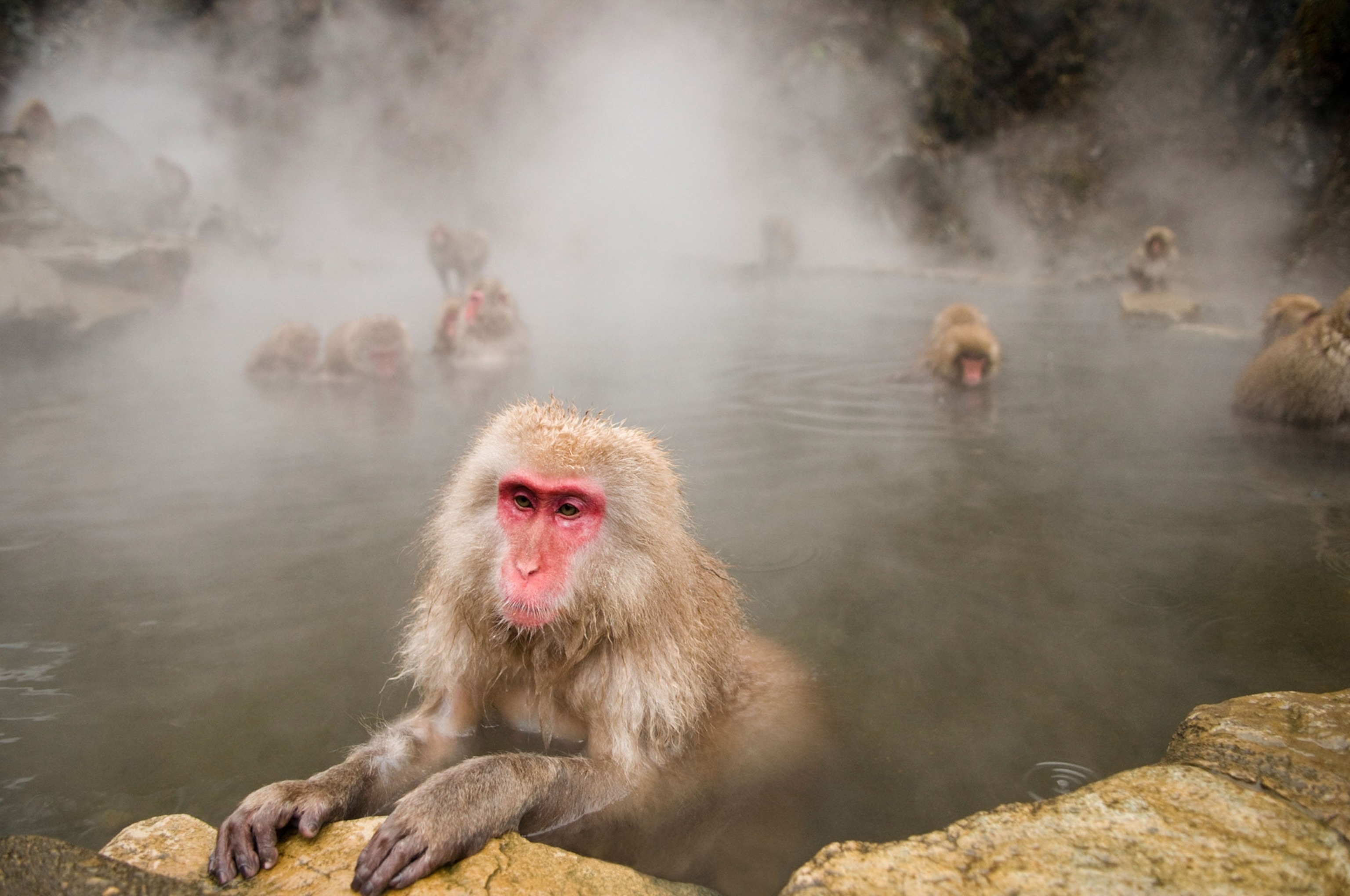
In Nagano, a Japanese macaque or snow monkey joins others for a dip in the hot springs at Jigokudani Monkey Park.
Photograph by VisualJapan, Alamy Stock Photo
Japan has more than 27,000 natural hot springs, or onsen, and visiting them is a major national pastime. Onsen writer Rie Nishimura shares one of her favorites. “Nozawa Onsen in Nagano Prefecture is a hot springs town with sloping streets lined with wooden inns, and the communal baths are managed by the villagers.”
Wearing yukata and slippers, you can walk between baths around the village—each sheltered by a bathhouse and with an honor box to deposit a few coins at the door. “Traditional hot spring culture is alive and well here,” says Nishimura. The village is near the famous ‘snow monkey park,’ Jigokudani, a natural hot spring where local Japanese macaques drop in to warm up during the frigid, snowy winters.
Indulge in food for the soul
For a unique food experience, Yukari Sakamoto, author of Food Sake Tokyo, recommends a visit to the quiet temple of Sankōin, in suburban western Tokyo, where you can feed both spirit and body. “The cuisine is traditional shōjin ryōri,” says Sakamoto. Shojin ryori is the ascetic, vegetarian cuisine eaten by Buddhist monks in training. It’s simple, intensely seasonal, and eaten with devotion and gratitude.
“Head chef Kōshun Nishii has many fans who come to be nourished with dishes such as sesame tōfu, smoked tōfu, which is like cheese, freeze-dried tōfu, and a variety of vegetables. Lunch is served in a spacious room behind the temple.” Diners look out into the garden, with stands of bamboo, and maple and cherry trees, providing bursts of color throughout the year.
(Related: Top 10 things to do in Japan.)
Go island hopping
At the southern end of the country is the arcing Ryukyu Island chain, reaching from southern Kyushu to Taiwan, though most of the islands are part of Okinawa Prefecture. Kazuhiro Namba, who runs a small business dedicated to ocean conservation, often spends weekends on the Kerama Islands, a designated national park. The inhabited islands are Aka, Zamami, Geruma, and Tokashiki. Zamami is Namba’s favorite island.
“There’s a ferry from Tomari Port, and you can easily arrange a day trip without having to hustle to find accommodations. There are shops for renting motorbikes or bicycles, and the snorkeling is good,” he says. The bright blue ocean is home to gently undulating coral reefs, and migrating humpback whales are frequently seen here. Head up to the Unajinosachi Observatory for spectacular sunset views.
Explore the night sky and dairy delights by bike
“These are places where bears live. You have to be careful,” says Fuminosuke Yamamura, a veterinarian who has lived in Hokkaido for 20 years. Yamamura is talking about camping at the Satsunai River Dam, where there are waterfalls, hiking trails on Mount Kamuiekuushikaushi, and fishing for rainbow trout and char on the Satsunai River.
“You can rent a bicycle at the road station, and you may spot deer, foxes, rabbits, and squirrels around.” In the fall, salmon run upriver, and at night, with no light pollution, the Milky Way is visible. Thanks to Yamamura’s bovine clients, Hokkaido is famous for dairy. He recommends visiting his favorite place for ice cream and cheese, Tokachino Fromage.
Immerse yourself in a sacred setting

Dating back 1,200 years, the Hakone Shrine at Lake Ashinoko is one of the most popular Shinto shrines known for its iconic red torii gate standing on the lake shore.
Photograph by Sebastian Condrea, Getty Images
Photographer Isao Naruse appreciates the aesthetic of Hakone, just an hour and a half train ride from Tokyo. On the banks of Lake Ashi, “Hakone Shrine is small but has a quiet appearance and blends with nature, and the beauty of the sacred trees will take your breath away,” says Naruse. The shrine’s distinctive red torii (gate) appears to float in the water just offshore. “Mikuni Pass offers a panoramic view of Hakone City and the lake, creating a wonderful balance between human life and nature,” he explains.
The town’s Hakone Open Air Museum has over 1,000 works of art, including over 100 sculptures spread across 17 acres of mountainous greenery. Nearby, a cable car sails over Owakudani, where sulfurous hot springs bubble to the surface, venting sinister-smelling steam. The must-try, popular snack here is eggs hard-boiled directly in the springs, which turns them black.
(Related: Need a spiritual lift? Try this thousand-year-old island hike in Japan.)
Hop on a motorcycle to explore Japan’s countryside
Motorcycle enthusiast Miwa Kokubun insists that Fukushima is the best the country has to offer. “In Fukushima, we have everything beautiful: mountains, scenery, the ocean, lakes, delicious ramen, scenic roads, skylines, onsen,” she says. It’s best explored on two wheels. Kokubun gets around on her emerald green Kawasaki.
In autumn, “the buckwheat fields on the Sarugaku Plateau or the Takatsue Plateau are so beautiful,” while in spring, “from Mt. Bandai Ranch, I can see Lake Inawashiro with rows of cherry trees blossoming.” The fresh air will whet your appetite, so take an excursion to Kitakata to try the popular Kitakata ramen—thick noodles, soy sauce-based broth, and barbecued pork.
Take a tour of the Hells of Beppu
Beppu’s many geothermal hot spots are sometimes called the “seven hells.” Located in Oita Prefecture, Kyushu has the most springs in the country, with nearly 5000 registered. Travel writer Mayu Higa also enjoys onsens and says, “I’ve visited many hot springs in Japan, and I love Beppu the best. I felt the energy of the earth there.”
You can do the jigoku meguri–‘hell tour’–and see an active geyser, try the foot baths, or cook a meal using geothermal steam. A popular treatment in Beppu is the hot sand bath (don a yukata), where you are buried in thermally heated sand to sweat it out while gazing out at the ocean.
Gorge on wanko soba
Turning to the north, the Tohoku region has a reputation for remoteness but also wilderness. Kazuo Oka, executive director of Mirai no Mori, a non-profit organization that provides outdoor programs to marginalized youth, loves Genbikei, a plunging gorge in Iwate Prefecture lined with hiking trails and accented with waterfalls. “It has spectacular scenery in each season, and it’s hidden in a deep local area in Tohoku,” she says. Wanko soba is also in Iwate. “This is a fun experience in Morioka, Iwate,” says Sakamoto.
“Soba (buckwheat) noodles are served in bite-size portions in red lacquer bowls with a splash of broth. It’s a festive environment with a server constantly refilling your bowl. At the end of the meal, the server counts how many bowls are on the table. Diners are given a wooden block with the number of bowls they consumed.” Several restaurants serve wanko soba, including Azumaya.
Embark on an active adventure for wildlife and culture
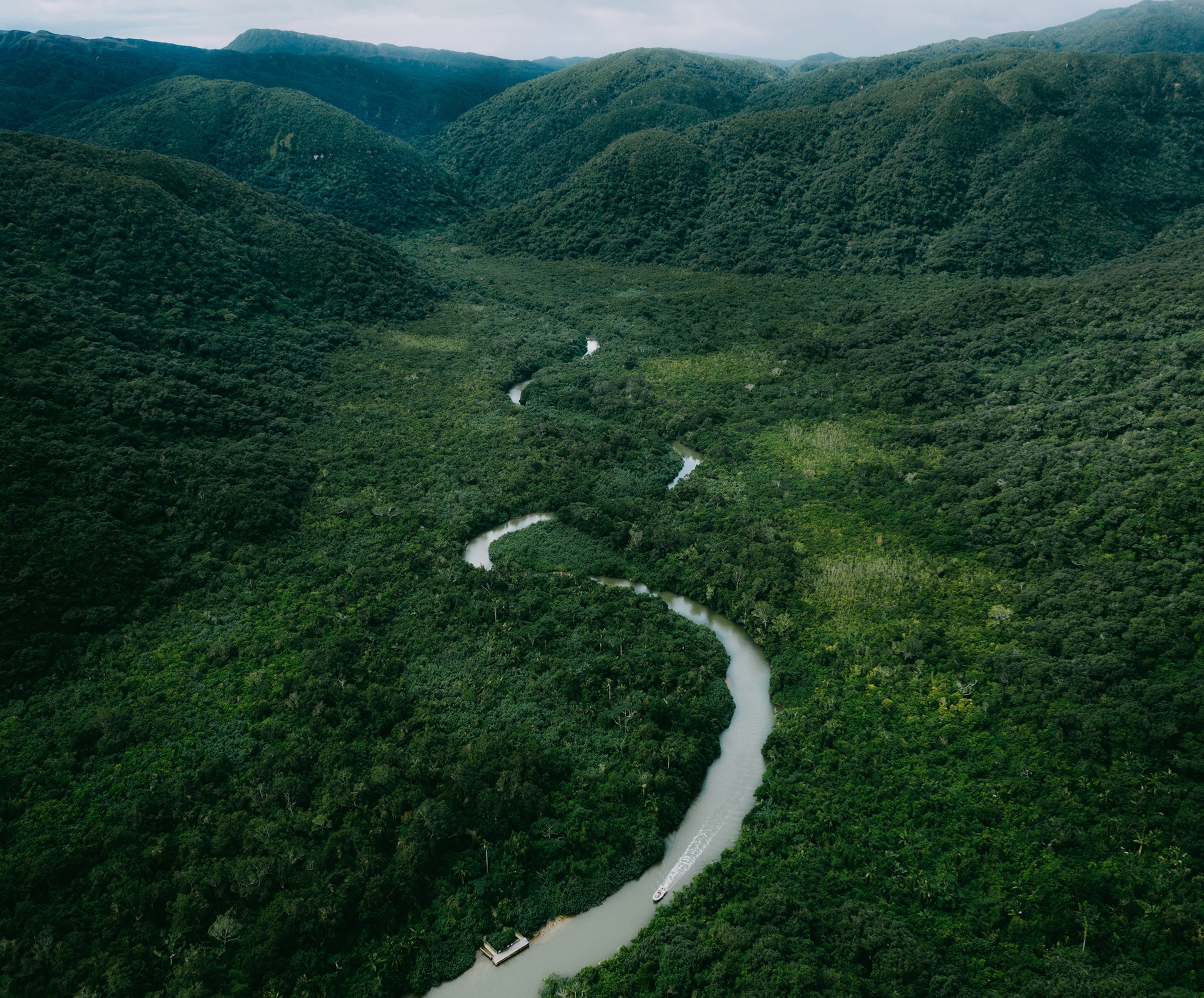
A mangrove river winds through the jungle of Iriomote-Ishigaki National Park located in and around the Yaeyama Islands, also part of Japan’s Okinawa Prefecture.
Photograph by Ippei Naoi, Getty Images
“These tropical islands boast some of Japan’s clearest waters for diving,” says Miyoshi Grant of the Iriomote-Ishigaki National Park. “You can dive with sea turtles, a wide variety of tropical fish, and best of all, manta rays. There are white sandy beaches and snorkel spots if that’s more your pace,” she explains. From the airport on Ishigaki Island, where most accommodations and eateries are, you can take a ferry to other islands, including Taketomi, which is famous for water buffalo carts, its traditional Okinawan villages, and star-shaped sand beaches.
Miyoshi Grant adds, “Personally, I enjoy Iriomote Island, which is mostly jungle and boasts jaw-dropping waterfall hikes and kayaking excursions. It’s also home to the endangered Iriomote wildcat, although I’ve yet to come across one!”



